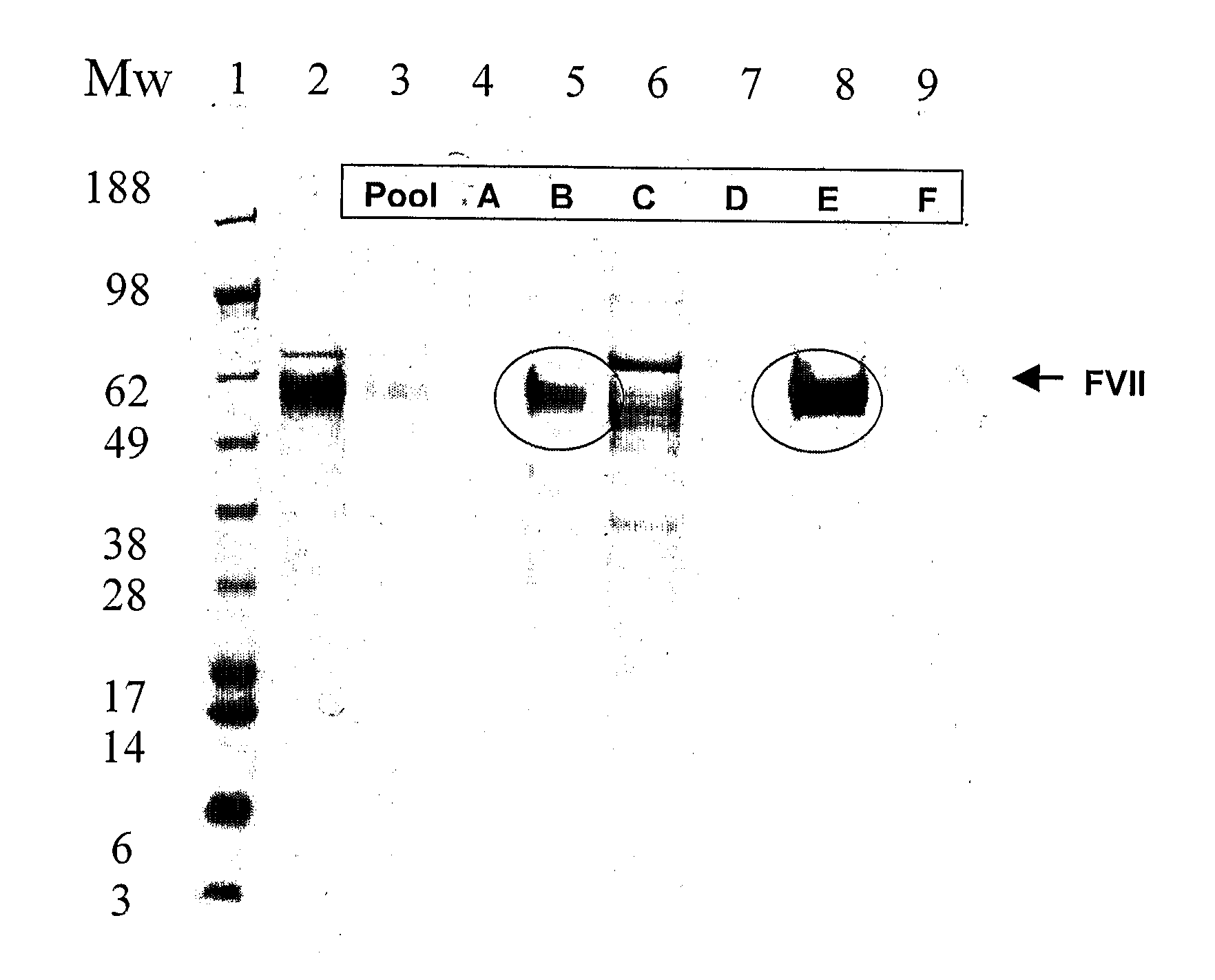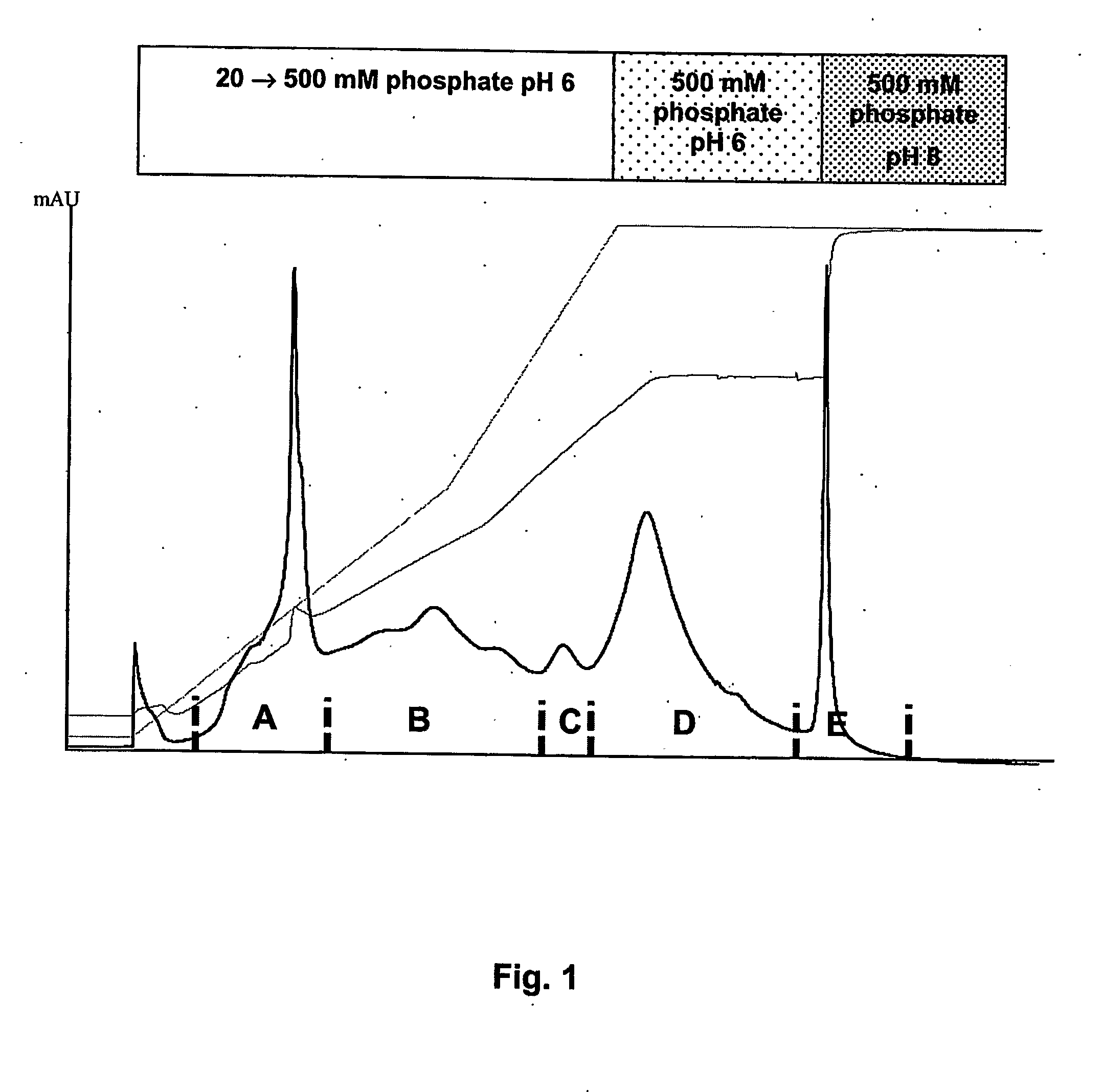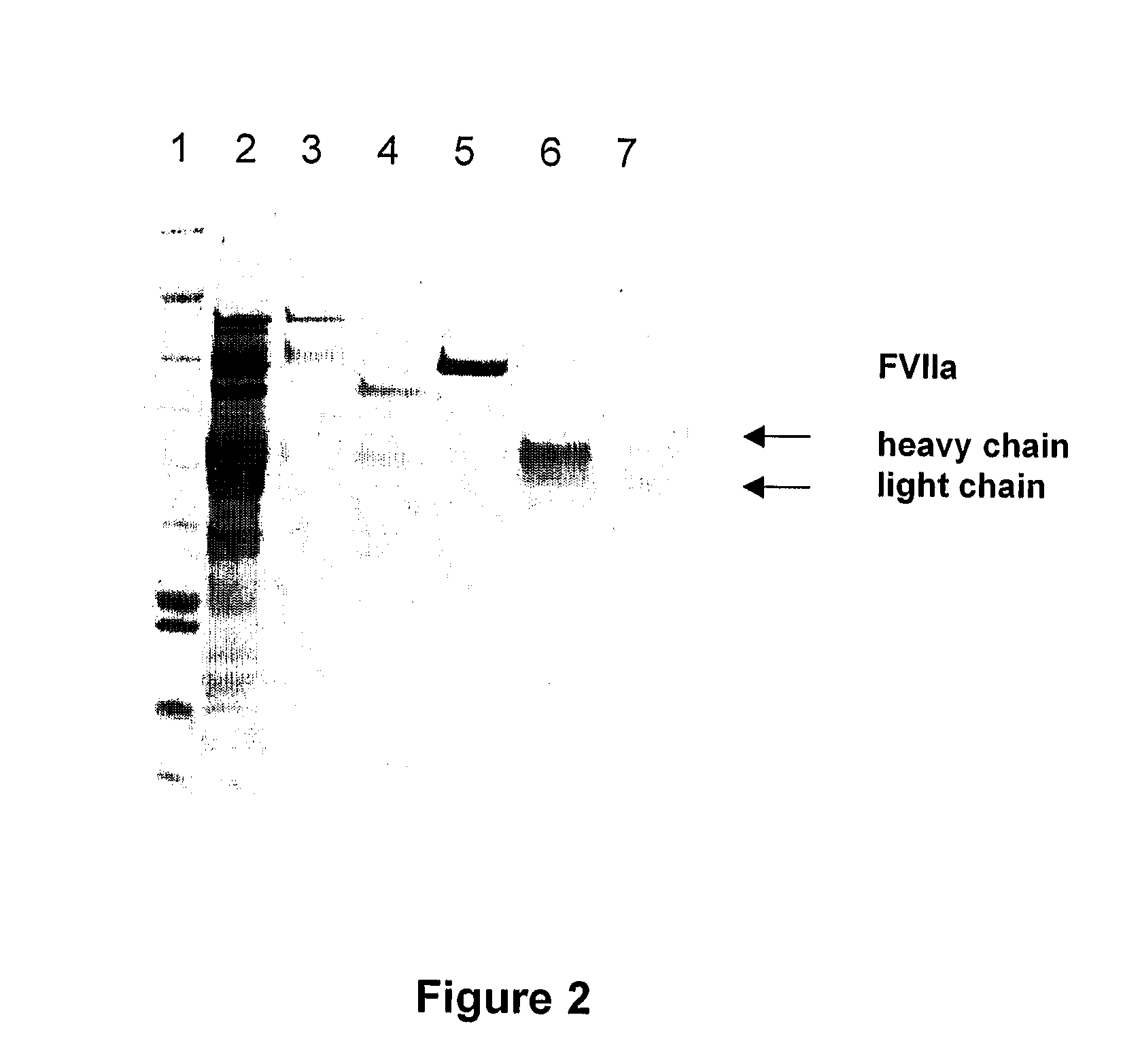Method for purification of factor vii
a technology of factor vii and purification method, which is applied in the field of purification method of factor vii protein, can solve the problems of affecting the safety of the final drug, and the cost of producing the monoclonal antibody (mab) immunoaffinity matrix is considerabl
- Summary
- Abstract
- Description
- Claims
- Application Information
AI Technical Summary
Benefits of technology
Problems solved by technology
Method used
Image
Examples
example 1
Materials and Methods
[0030]The recombinant human FVII protein applied onto the HAP column was produced in CHO-K1 cells. Culture supernatants were sterile-filtered, ultra-filtered and dia-filtered against 10 nM Tris pH 8.6. The sample was subsequently captured on a Q-Sepharose™ FF column previously equilibrated with 10 mM Tris, pH 8.6. After washing in 10 mM Tris, 100 mM NaCl, pH 8.6 the bound FVII protein was eluted in 10 mM Tris, 35 mM CaCl2, 25 mM NaCl, pH 8.6. This sample was desalted to lower the conductivity in 20 mM Tris-HCl, 0.5 mM CaCl2, pH 7.5 prior to application onto the hydroxyapatite column.
[0031]Ceramic hydroxyapatite type 1 was from Biorad (cat #157-0400). The columns were packed at volumes of 3-10 ml with column diameters of 5 or 10 mm (Amersham Biosciences) in 0.2 M Na-Phosphate, pH 9-10 and subsequently equilibrated with 10 mM Tris, pH 8.6. The columns were run at room temperature and typically at up to 30 CV / h.
Results
[0032]FVII eluted from an anion exchange captur...
example 2
Materials and Methods
[0034]The recombinant human FVII protein applied onto the HAP column was produced in CHO-K1 cells. Culture supernatants were sterile-filtered, ultra-filtered and dia-filtered against 25 mM imidazole, 25 mM NaCl, pH 7.0. 5 mM EDTA was subsequently added to the dia-filtered sample prior to capture on a Q-Sepharose™ FF column previously equilibrated with 25 mM imidazole, 25 mM NaCl, pH 7.0. After washing in 25 mM imidazole, 25 mM NaCl, 5 mM CaCl2, pH 7.0, the bound FVII protein was eluted in 25 mM imidazole, 75 mM CaCl2, 5 mM NaCl, pH 7.0. This sample was diluted in 25 mM imidazole, pH 6.5 to lower the conductivity prior to application onto the hydroxyapatite column.
[0035]Ceramic hydroxyapatite was as described above in Example 1. The columns were packed and run as described above, equilibrating with 25 mM imidazole, pH 6.5, with a column volume of 30 ml and a column diameter of 16 mm. The presence of FVII isomers is estimated by the ratio between two ELISAs, direc...
PUM
| Property | Measurement | Unit |
|---|---|---|
| Molar density | aaaaa | aaaaa |
| Concentration | aaaaa | aaaaa |
Abstract
Description
Claims
Application Information
 Login to View More
Login to View More - R&D
- Intellectual Property
- Life Sciences
- Materials
- Tech Scout
- Unparalleled Data Quality
- Higher Quality Content
- 60% Fewer Hallucinations
Browse by: Latest US Patents, China's latest patents, Technical Efficacy Thesaurus, Application Domain, Technology Topic, Popular Technical Reports.
© 2025 PatSnap. All rights reserved.Legal|Privacy policy|Modern Slavery Act Transparency Statement|Sitemap|About US| Contact US: help@patsnap.com



